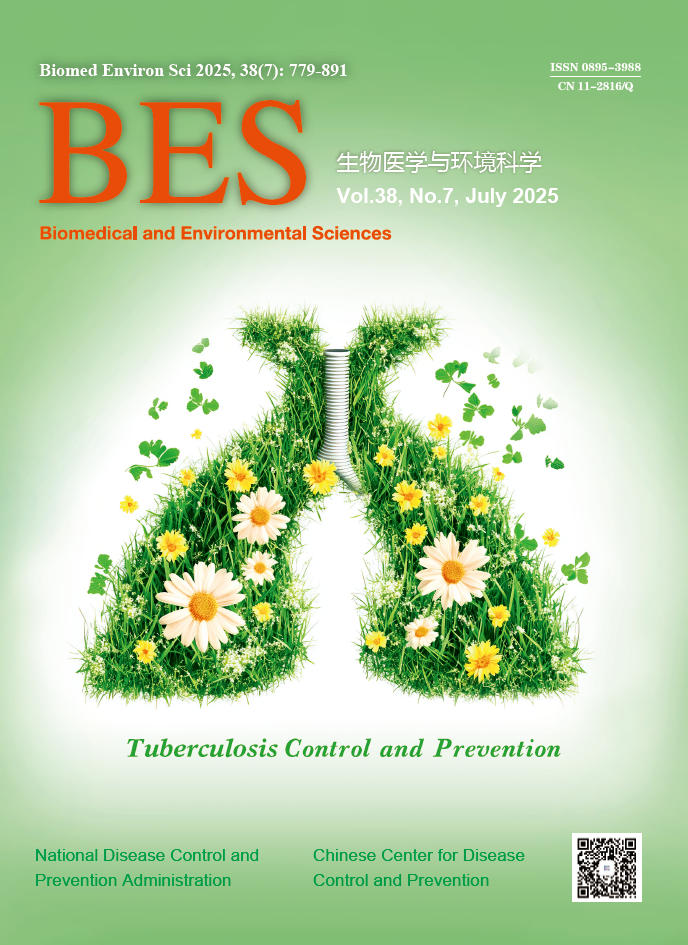-
As a major global public health issue, tuberculosis is closely related to multiple socio-ecological factors in its epidemiological patterns[1]. China, as a high-burden country for tuberculosis, exhibits regional variations in the distribution of the tuberculosis epidemic. To enhance the efficiency of prevention and control, its strategies are undergoing a transition toward regionally differentiated approaches[2]. On the basis of enhancing patient management, strengthening active case finding and preventive treatment for high-risk groups with latent infection has become a core tool[3]. In addition, improving resource input in public health services and environmental governance is also regarded as a comprehensive measure for controlling disease transmission[4]. Therefore, different regions in China are strengthening epidemiological research on tuberculosis, aiming to provide important scientific basis for formulating region-specific prevention and control strategies.
Guangdong Province does not have the highest tuberculosis incidence rate in China, but as a populous province with a permanent population exceeding 127 million, coupled with an annual average of 40 million floating population, it reports nearly 50,000 incident cases each year, ranking first in the country for many consecutive years. This is closely related to population size, high-density environments, and cross-regional transmission among floating populations. Wuel al. presented their recent data addressing the spatiotemporal patterns and socioeconomic factors influencing the epidemic of tuberculosis in the Guangdong Provincefrom 2010 to 2019, using heat maps, hierarchical clustering, and Bayesian spatiotemporal conditional autoregressive (ST-CAR) model. It revealed an overall downward trend in tuberculosis incidence from 91.85 per 100,000 to 53.06 per 100,000, while identifying the spatial differentiation between hotspots in northeastern Guangdong such as Heyuan and Shanwei and low-incidence areas in the Pearl River Delta. This spatiotemporal analysis method can effectively capture the dynamic evolution of disease distribution. The identified protective factors such as per capita GDP, physician ratio, and public expenditure highlight the fundamental role of socioeconomic development and medical resource allocation in tuberculosis management. In addition, challenges such as drug-resistant bacterial transmission and management of floating populations remain ongoing issues that need continuous attention[5].
Shanghai has the lowest tuberculosis incidence rate in the country (19.2 per 100,000 in 2024), and its epidemic situation has remained at the optimal level nationwide. However, as prevention and control efforts enter the "low-prevalence" phase, further reduction in the incidence rate faces challenges. Ye and colleaguesturned their attention to exploring the impact of air pollution on the tuberculosis epidemic, as well as exploring pathways to further reduce the tuberculosis epidemic by strengthening environmental governance. They found that PM2.5, PM10, and rainfall could increase the risk of incidence, while NO2, SO2, and air pressure showed protective effects, and low temperatures would amplify the impact of PM2.5. The study innovatively incorporated lag effect analysis, for example, the cumulative relative risk of PM2.5 at 0–19 weeks reached 1.166, revealing the long-term potential impact of environmental factors on tuberculosis incidence and providing a new perspective for understanding the environmental driving mechanisms of the disease. Air quality may affect multiple human health outcomes, and relevant studies on tuberculosis benefiting from environmental improvements will undoubtedly drive the transformation of tuberculosis prevention and control from the model of “treating a specific disease exclusively” to a new model of “preventing multiple diseases simultaneously”[6].
The studies still have certain limitations. The Guangdong study did not include environmental factors, while the Shanghai study lacked analysis of socioeconomic variables, making it difficult to fully reveal “social-environmental interactions”. In addition, the spatiotemporal model in Guangdong did not consider individual-level exposure differences, and the spatial resolution of environmental data in Shanghai might affect the accuracy of results. Future studies could integrate multi-source data, construct a comprehensive analytical framework of “socioeconomic-environmental exposure-population vulnerability”, and adopt more refined spatial analysis methods such as geographically weighted regression models to reveal regional heterogeneity mechanisms.
In conclusion, at the national level, a tuberculosis prevention and control system that takes into account regional characteristics should be established: focusing on resource input and economic support for economically underdeveloped areas, and strengthening environmental governance and health impact assessment for areas with high urbanization levels[7,8]. Meanwhile, promoting interdisciplinary collaboration and multi-departmental coordination is essential to achieve precision and long-term effectiveness in tuberculosis management.
Socioeconomic and Environmental Factors Influence Tuberculosis Control
doi: 10.3967/bes2025.091
- Received Date: 2025-07-03
- Accepted Date: 2025-07-18
| Citation: | Lei Gao. Socioeconomic and Environmental Factors Influence Tuberculosis Control[J]. Biomedical and Environmental Sciences, 2025, 38(7): 779-780. doi: 10.3967/bes2025.091 |







 Quick Links
Quick Links
 DownLoad:
DownLoad: